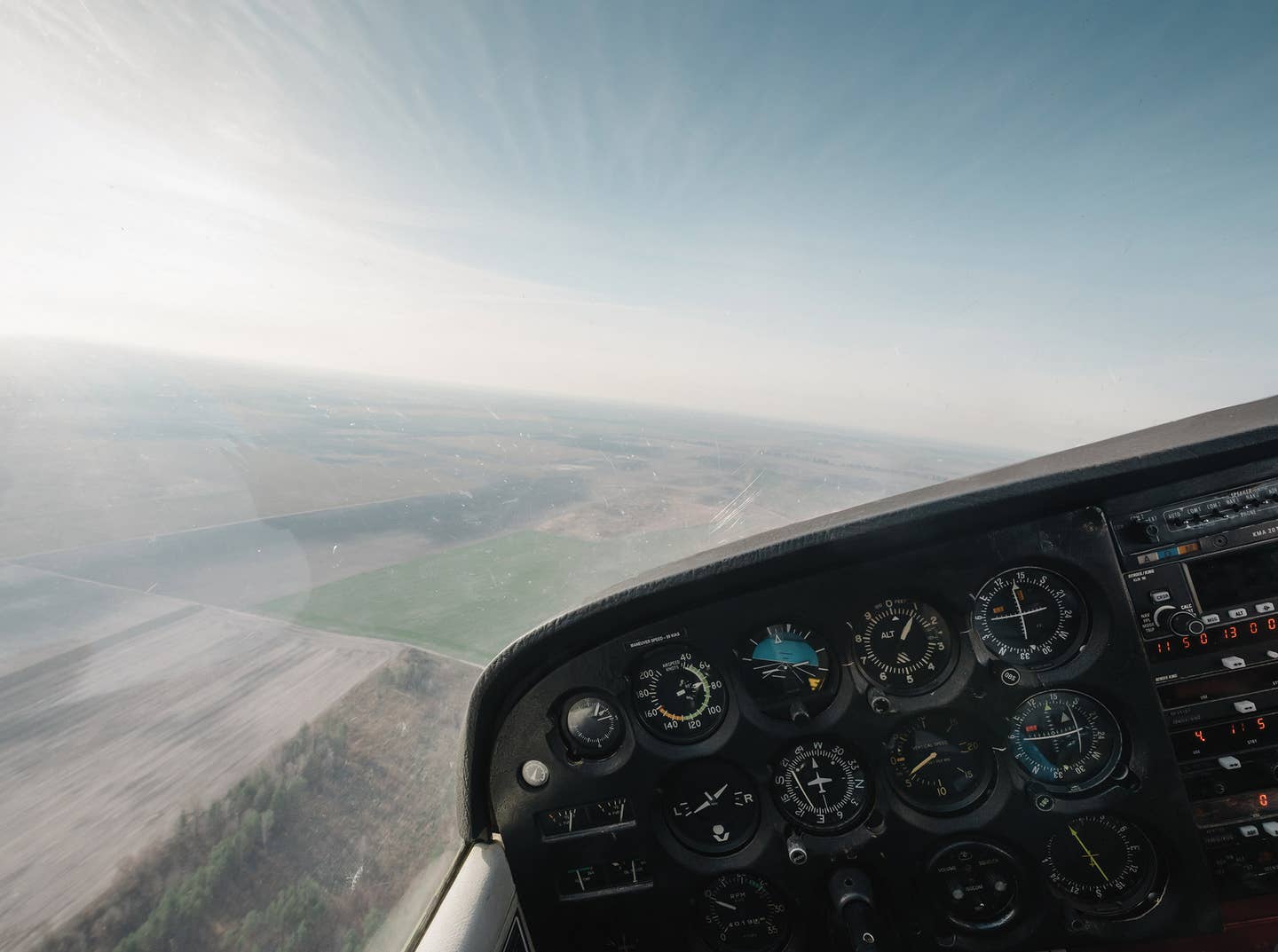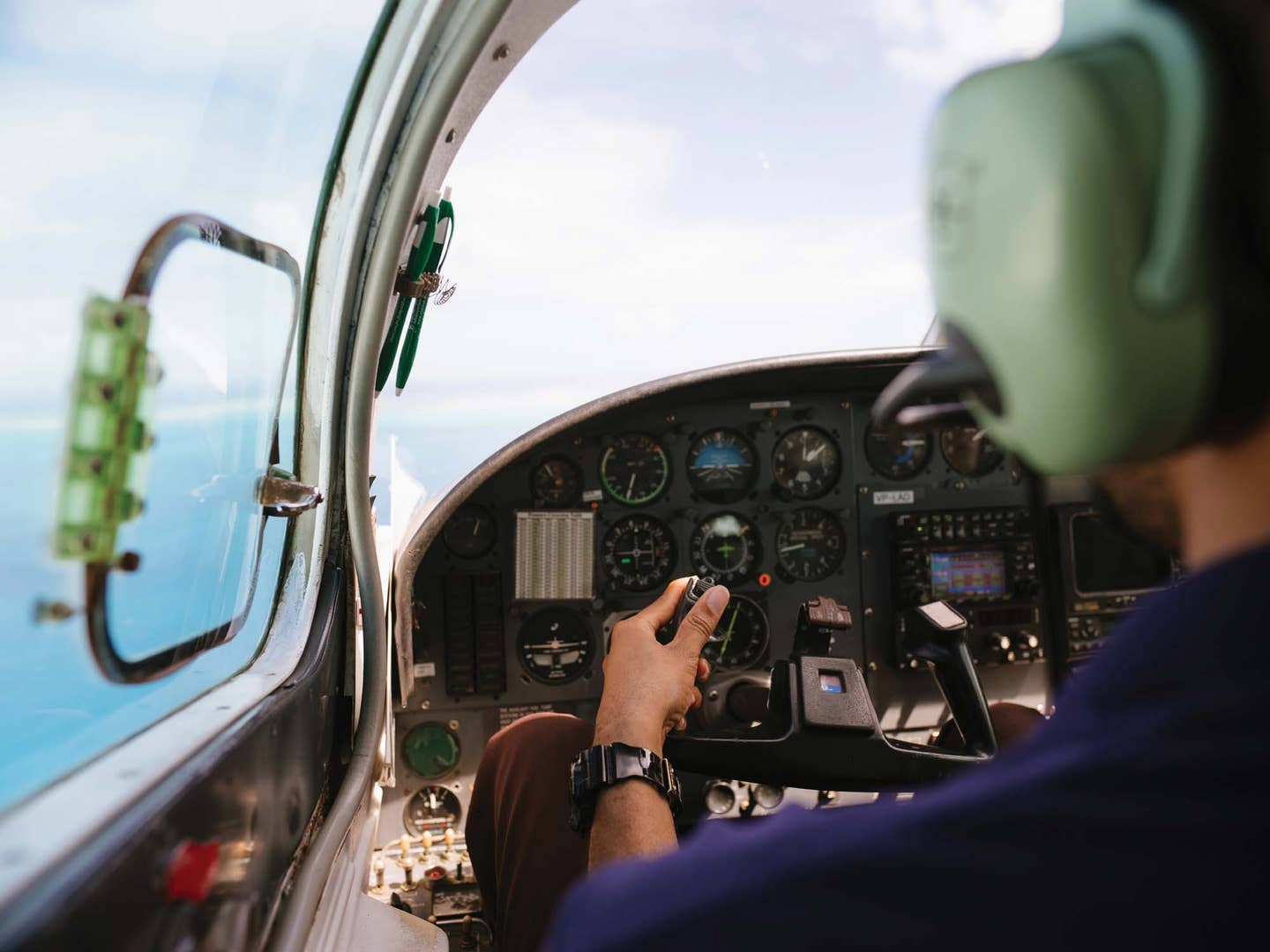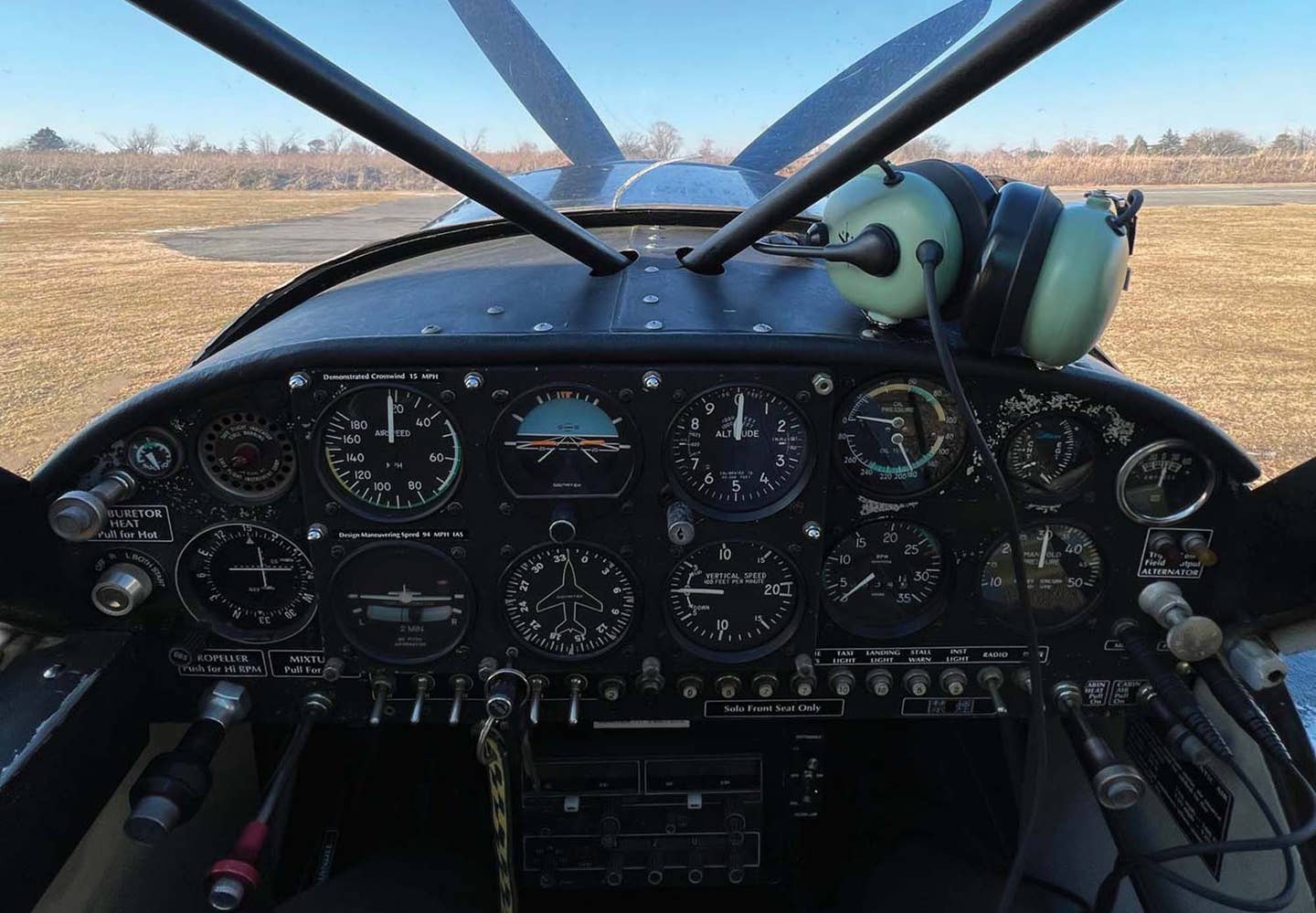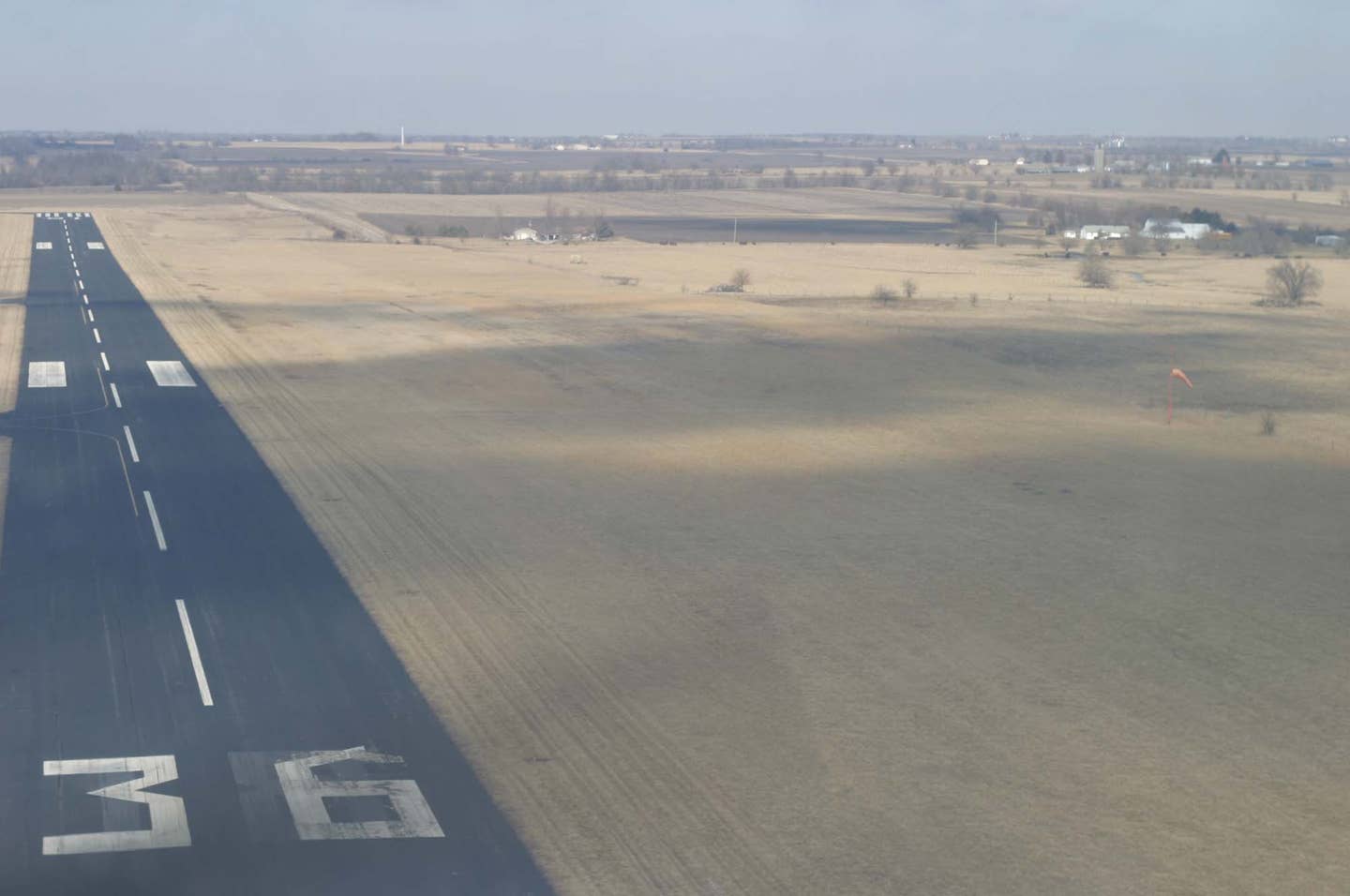After the Accident – Below Minimums
“Practically on the ground now,” radioed one of the pilots of a Cessna 441 after acknowledging its approach clearance. It was inbound on the RNAV GPS Runway 36 instrument approach…

It was “severe clear” at the destination, but closer to home a cold front was passing overhead. [Photo: Adobe Images]
“Practically on the ground now,” radioed one of the pilots of a Cessna 441 after acknowledging its approach clearance. It was inbound on the RNAV GPS Runway 36 instrument approach at Winchester Municipal Airport (KBGF) in Tennessee. Radar and ADS-B data showed the plane crossing the intermediate approach fix on course and at the correct altitude. It started a descent but did not level out at the final approach fix altitude. Instead, it continued downward, crashing into woods about 5 miles short of the runway. Both pilots aboard were killed.
The accident occurred on a cloudy, cold February afternoon in 2021. The National Transportation Safety Board (NTSB) has released its final report, and it contains some clues to the pilot’s thinking. There are no surprising mechanical or meteorological findings. No unexpected revelations. Instead, it was as it initially appeared—a normally functioning airplane flown below the published approach minimums out of the clouds and into the ground.
Cessna 441s are workhorses—this one powered by two 715 hp turboprop engines—and they are popular with charter operators. This 1978 model Conquest II had two pilots in the cockpit. One was a professional 18,000-hour airline transport pilot (ATP), the other a 770-hour pilot with a commercial certificate who had recently retired. It’s unknown who was in what seat, or who was flying at the time of the accident. What we do know is the more experienced pilot had been thinking about the instrument approach at their home airport for hours.
At 9:24 a.m., the ATP-rated pilot called Leidos Flight Service for a weather briefing. The plan was to fly from Belvidere, Tennessee, to Bowman Field Airport (KLOU) in Louisville, Kentucky, on to Thomasville Regional Airport (KTVI) and then return. It was “severe clear” at the destination, but closer to home a cold front was passing overhead. Right away the briefer talked about possible icing, as conditions were conducive for ice to form on wings and propellers in a cloud layer aloft. The briefer said, “The only trials and tribulations you have this morning [are] going to be punching through that layer as quickly as possible, minimizing the time in the clouds.” Asked if he had anti-ice or deice equipment on the Cessna, the pilot replied, “Yep, uh-huh. But I don’t like to use it.” The briefer calculated the icing layer was about 3,000 feet thick, and the pilot wouldn’t be in it long if he climbed at a good rate. The forecast for hat afternoon was for improving weather.
When heading back to home base, the pilots found the weather had not cleared. When they started the approach, the ceiling was 800 feet overcast, visibility 9 sm, with the ground temperature right at freezing, light rime icing conditions in the clouds, and tops of the clouds at about 4,000 feet. But for a Cessna 441, that’s well above the minimums published on the RNAV GPS RWY 36 straight-in approach of 400 feet and 1¼ sm. The final approach track has several altitudes, crossing the fixes at YOKUS at 4,000 feet, and WETSO at 3,000 feet, and with the LNAV/VNAV minimum altitude of 1,367 feet. The runway elevation is 979 feet.
The Cessna correctly crossed YOKUS at 4,000 feet and started a descent. It did not stop as prescribed at 3,000 feet but continued gently descending. At 2,300 feet, the radar data ends, at 2,100 the ADS-B data ends. The airplane hit trees close to the WETSO intersection at an elevation of 1,880 feet. It rolled inverted, hit the ground, and caught fire.
There was no distress call, and no medical or other unusual factors. The NTSB concluded the probable cause to be “the pilot’s failure to follow the published instrument approach procedure by prematurely descending the airplane below the final approach fix altitude to fly under the low ceiling conditions, which resulted in controlled flight into terrain.” It added, “the pilot likely attempted to fly the airplane under the weather to visually acquire the runway.” This might not be as rare as we’d like to think. While staying at published altitudes is a basic safety rule for instrument flying, a 2020 Embry-Riddle Aeronautical University peer-reviewed research study found compliance approaching the runway to be remarkably poor.
In fact, 96.4 percent of the 114 pilots descended below their stated personal minimums on a simulated ILS approach by an average of 303 feet. And 81.5 percent descended below the published federal minimums (by an average of 43 feet). The researchers noted, “These values are highly concerning.” The authors concluded that “pilots are knowingly or unknowingly accepting additional risk during a very critical phase of flight... A simulated (i.e., cash bonus) manipulation designed to mimic external pressures had no effect on pilots’ lowest altitude flown.”
The accident pilot had a possible motivation to descend below instrument altitudes. It’s not discussed by the NTSB, but this incident mirrors a fatal airline accident from December 1, 1993, at what is now called Range Regional Airport (KHIB) in Hibbing, Minnesota. A 19-seat twin-turboprop was on the localizer back course approach to Runway 13. Like other similar aircraft, the Jetstream 3100 was susceptible to tailplane icing. So a technique had evolved among line pilots to minimize their exposure to icing conditions. The NTSB report said the pilot’s “probable intention was to descend at higher than normal rates of speed to minimize the time in icing conditions.”
The Jetstream crew started the approach a little high, above the clouds, and descended at 2,200 feet per minute once on the final course. This high rate of descent inside the final approach fix was against written company procedures, partly because, when leveling out, it leaves little time or space for correcting errors. The airplane quickly descended below the minimum altitude and crashed into woods 4 miles from the airport—at about the same relative runway position as the Cessna 441.
In both accidents, the pilots were trying to manage the threat of airframe icing in the clouds with anti-ice or deice equipment they didn’t completely trust. They were trying to fly safely. And while minimizing time spent in cold, wet clouds is a valid general strategy, rapid descents inside the final approach fix is a dangerous practice. In both cases, no actual airframe icing was observed by investigators.
In trying to avoid icing, the pilots ignored basic instrument flying rules. Good pilots work hard to minimize threats, but sometimes risk management can be like holding too tight to a balloon. Push hard enough in one place, and it blows out somewhere else.
Editor's Note: This story originally appeared in the October 2023 issue of Plane & Pilot magazine.

Subscribe to Our Newsletter
Get the latest Plane & Pilot Magazine stories delivered directly to your inbox






